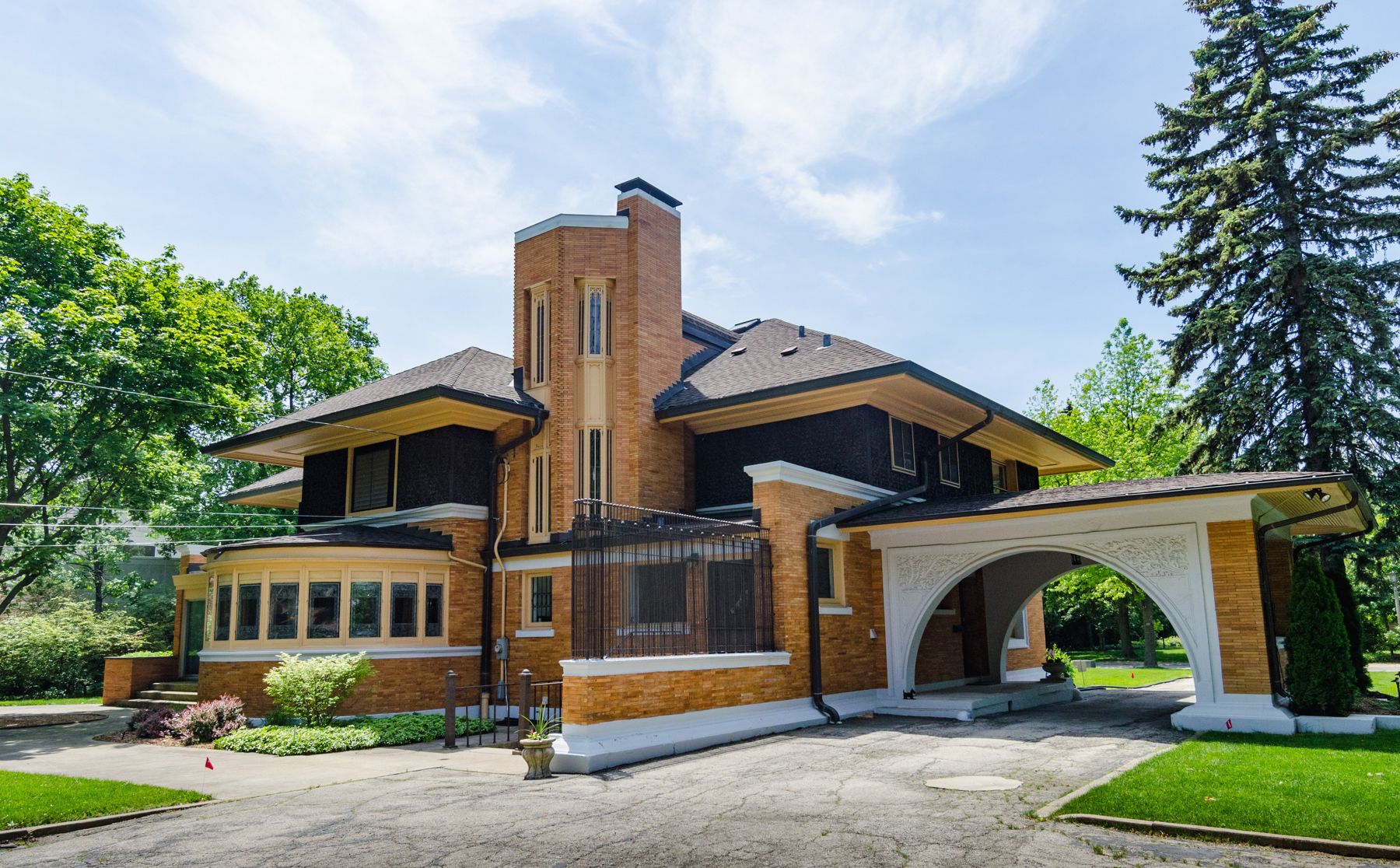#12006. Elegant Prairie Style brick facade with characteristic horizontal lines and expressive tower

The presented building is an excellent example of Prairie Style architecture, developed by Frank Lloyd Wright in the early 20th century. The facade is characterized by horizontal lines and volumes, typical of this style. The warm brown brick masonry forms the basis of the exterior appearance, skillfully combined with dark elements in the upper part of the building and contrasting light cornices.
A vertical element in the form of a brick tower with narrow windows creates a dynamic accent, breaking the horizontality of the composition. The wide roof overhangs, characteristic of the Prairie Style, provide protection from precipitation and create expressive shadows on the facade. Window groups with clear rhythm and geometry emphasize the horizontal lines of the structure.
The elegant arch of the portico on the right side of the building deserves special attention, decorated with delicate ornament, which adds sophistication to the overall appearance. Terraces and stepped volumes create a smooth transition between architecture and the surrounding landscape, which is a key principle of Wright's organic architecture.
When designing your own facade in a similar style, it's worth paying attention to the use of natural materials, harmonious combination of horizontal and vertical elements, thoughtful roof overhangs, and integration with the surrounding nature. It's also important to consider the balance between geometric rigor and decorative elements, which should complement rather than overload the overall composition.